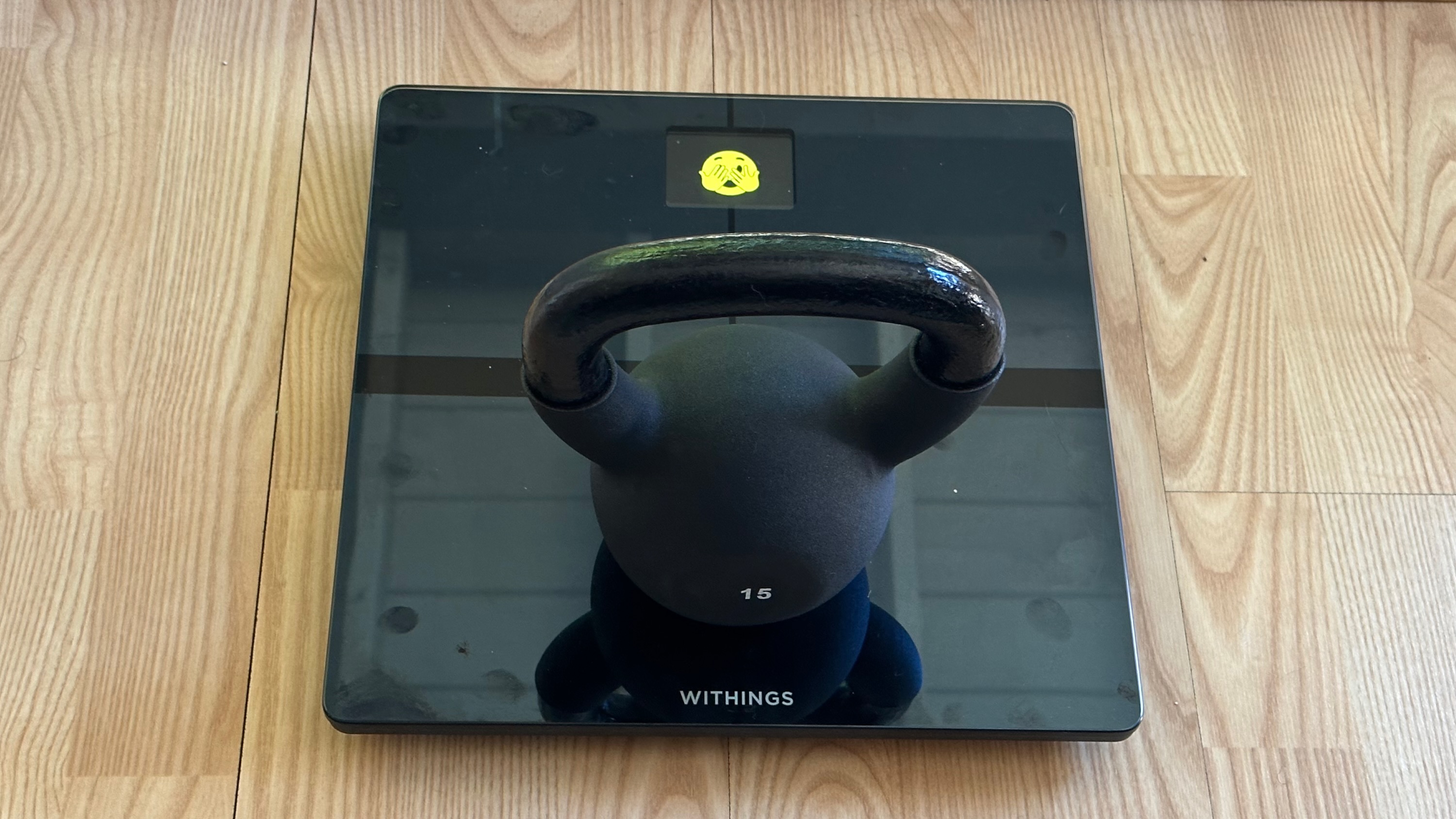

In this weekly column, Android Central Wearables Editor Michael Hicks talks about the world of wearables, apps, and fitness tech related to running and health, in his quest to get faster and more fit.
Last July, I discovered I'd hit 225 pounds—close to "obese" for my height—having gained over 20 pounds in three years. After that, I decided to change my lifestyle to return back to my pre-COVID weight, but I ended up dipping even further, as I'm currently at 192 pounds. And all my weight loss came without using a strict diet or nutrition apps but instead with the help of some useful tech items.
My weight gain snuck up on me. I ran consistently throughout my 20s and early 30s, and a walk-heavy lifestyle in Boston and New York City kept my body pretty healthy. I was never conscious of grown-up concepts like restrained eating, even as my metabolism slowed, my pace fell by minutes per mile, and my belly and love handles steadily grew.
The pandemic and this sedentary writing job were the tipping points, but I didn't realize it. I kept increasing my running mileage, finishing two (really slow) marathons in 2022 with the assumption that my effort would pay off in lost weight. Instead, the running did little to help, and the extra pounds led to a foot injury in spring 2023.
That was the catalyst for my weight loss efforts, and I treated July 2023 as a mid-year resolution moment to change things. One year later, it's paid off! So, for anyone else currently in a bit of a weight-loss slump, I thought I'd share my strategy for the tech tools I used to keep myself on track—and why I didn't need dieting apps to change my eating outlook.
Disclaimer: I'm not a weight loss expert or nutritionist. I'm simply showing a solution I found for myself, and I hope (but can't guarantee) it will work for others.
A scale with body composition data

First, you need a tool to track your progress. I'm no expert on smart scales, but I like my Withings Body Smart for tracking body fat, muscle, visceral fat, basal metabolic rate, hydration, and a few other metrics. It also has an "Eyes Closed" weigh-in mode, but I learned not to let a higher weight disappoint me.
My strategy was to weigh myself consistently two times a week on Wed/Thurs and Sat/Sun. Weighing daily puts too much obsessive emphasis on everything you do in a given day. But weighing once a week leaves you without context for whether that data is accurate or just a fluke.
Here's what I mean: Since the start of 2024, I've lost 12 pounds. But across all weigh-ins, my weight dipped 26 times, rose 18 times, and evened out twice.
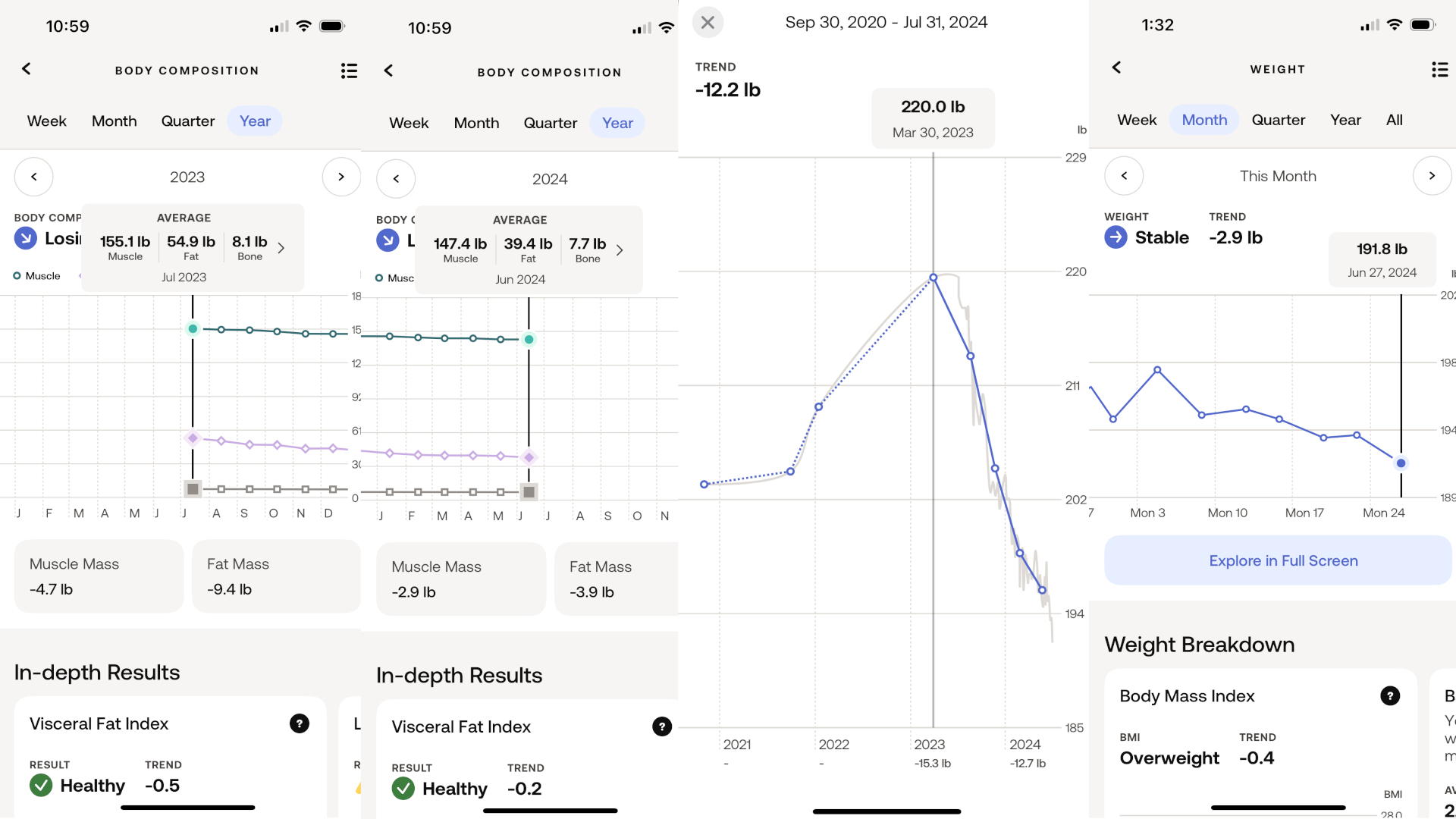
Sometimes, I gained or lost weight solely based on muscle gain or hydration, while my body fat stayed the same. More often, I'd lose body fat after a hard workout, and then my body would naturally add some fat back over the next few days.
I trended downwards from 25% to 19% body fat, but frequent weigh-ins helped me see how my body naturally fluctuates and helped me not get too depressed (or overly optimistic) because of one data point. So long as you're confident in your fitness and nutrition strategy, things should pay off in the long run.
Any smartwatch (it's all about the steps)
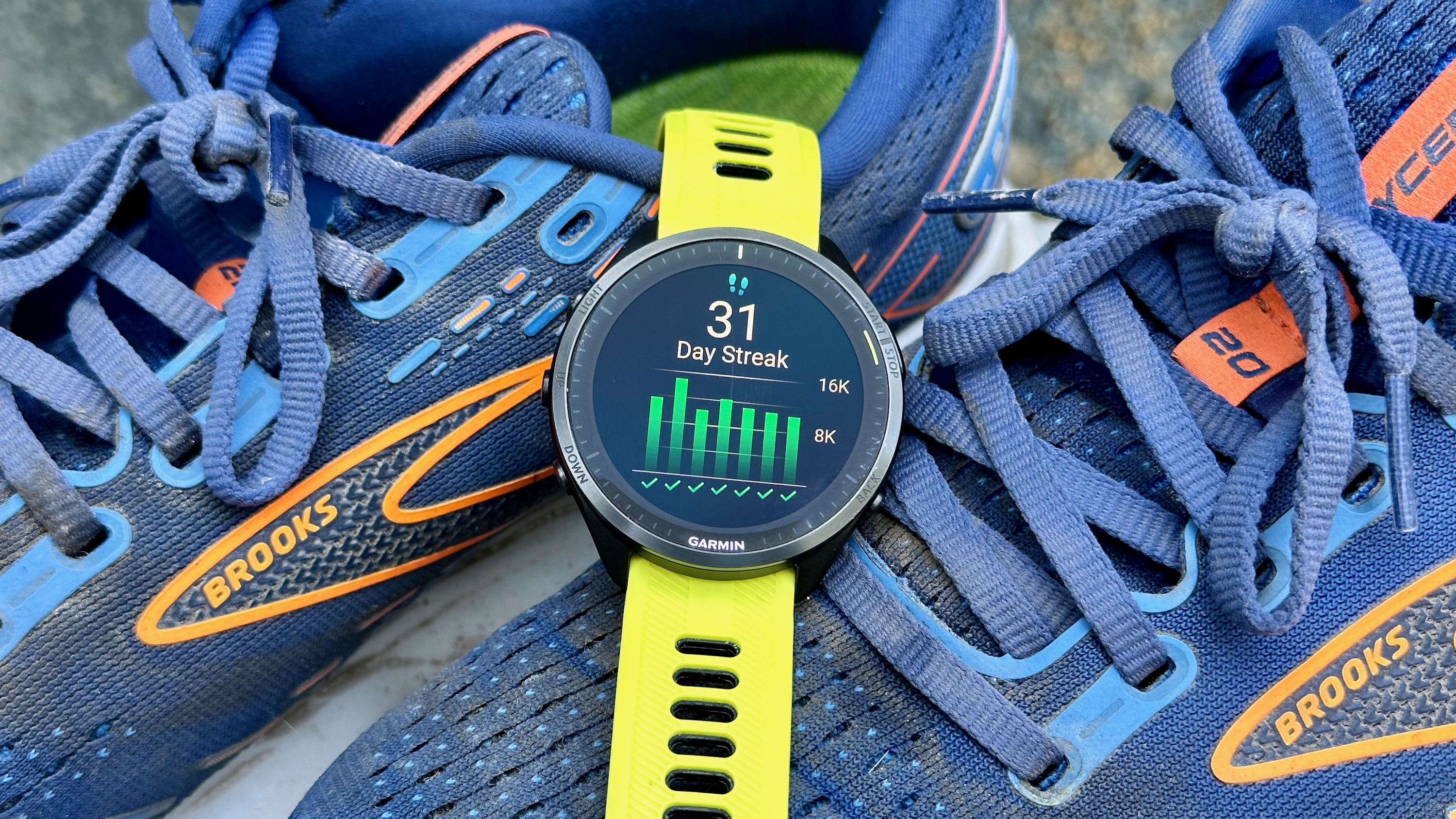
According to Strava, I ran 234 miles in 2021, 419 miles in 2022, and 674 miles in 2023. Most people would assume the extra mileage helped me lose weight; instead, I gained weight even as I ran more often. I'm sure every mile had a brief impact, but high-heart-rate runs burn calories, not fat, and then your body demands you replace those calories.
My first major month of weight loss was August 2023, when I walked over 10,000 steps a day for a month, or 374,000 in total, using my Garmin Forerunner 965 to track steps. It was an extremely boring experiment, as I had to find ways to entertain myself for 60–90 minutes of power walking every night. However, it also helped me lose 9 pounds that month.
Why did it work? For starters, fast walking falls into the low aerobic workout category—55–75% of your maximum heart rate—that burns fat instead of carbs. More importantly, daily walks carved out about 1.5–2 hours of my day for walking, showering, and filling up on water that might normally have been spent sitting and snacking.
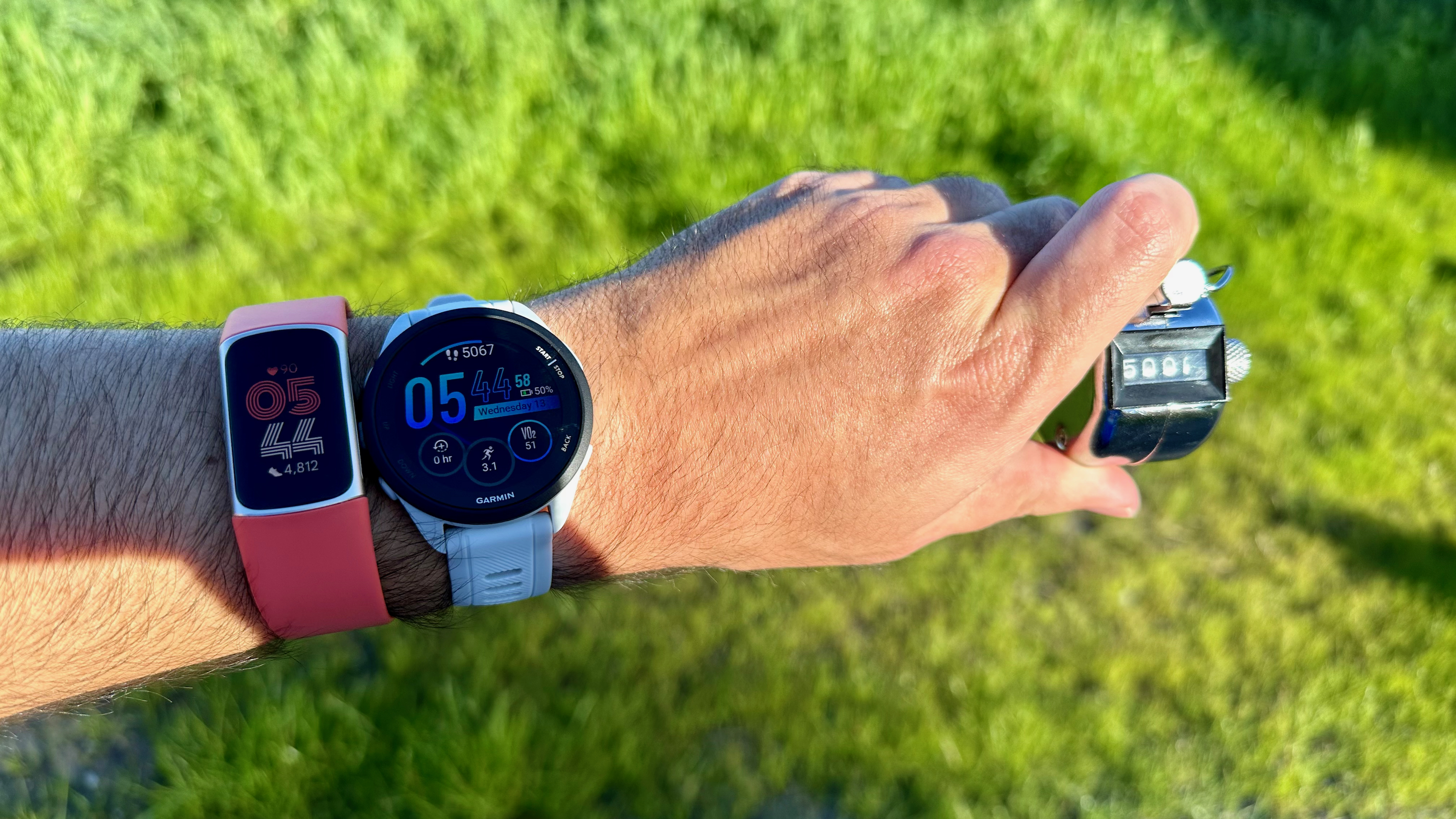
For people with a sedentary lifestyle and a lot of weight to carry, long walks are both a mental distraction from cravings and a low-impact physical activity, one that won't leave you too tired to exercise the next day. Just buy some good running shoes with cushy insoles to protect your feet before you start, and pick out podcasts or audiobooks to fill the hours.
Since August, I can't say I've walked every day. I have way too many books to read and video games to play. But the count for my average daily steps since July 2023 is 7,829; from July 2022 to 2023, it was only 5,100, most of which came from sporadic runs. This year's fat-burning walks have made a real weight loss difference, especially hilly hikes.
My Garmin Forerunner 965 is the most accurate watch for step counting, but its price and features are overkill for walkers and hikers. You can technically use Google Fit or Apple Health on your phone to track steps, but phones aren't always the most accurate, and it's nice to track walking activities to check mileage and heart rate, not just steps. So I recommend any of the best fitness watches or fitness trackers like the Fitbit Charge 6.
A Google Doc (yes, really)
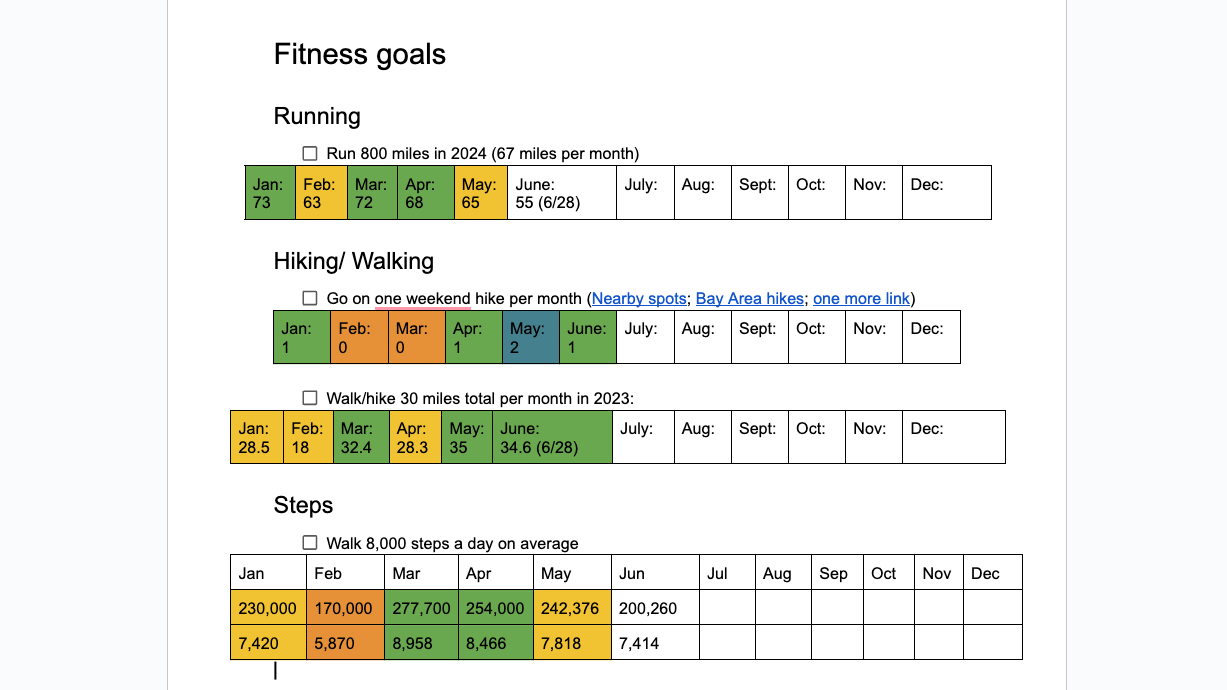
My laptop's Chrome browser has two tabs I never close: My Gmail and my "2024 Resolutions" document. On the latter, I track my monthly miles run, miles walked or hiked, steps, exercises like push-ups and squats, and a bunch of other fitness (and non-fitness) stuff. I took a quick screenshot above to show where and how I log my information.
You can probably find hundreds of fitness log mobile apps, each with detailed graphs and motivational tools that challenge you to hit daily goals and subtly make you feel bad if you "slack off" or lose a daily streak. But these don't work for me and likely won't work for busy people with jobs or kids that'll derail your best-laid plans for days, weeks, or even months.
Weight loss is a marathon, not a sprint. Monthly targets matter more than daily streaks for busy people.
Weight loss is a marathon, not a sprint. If you're motivated to hit monthly goals, it doesn't matter if you fall behind for a few days, so long as you try to make up lost ground in free moments or bounce back the next month.
When I fell off my walking goals in February because of the cold, I consigned that lazy month to a single orange "fail" box and then rebounded, surpassing my goals in March. I never let a setback demoralize me enough to give up entirely because the Google Doc shows how many more chances I have to hit my goals this year.
Having all that data on hand at a glance—and having a low-maintenance way to update your progress with a few keystrokes—is preferable to a convoluted fitness app that you can choose not to open to avoid guilty feelings. You can glance at your resolutions doc at any time to celebrate your progress or challenge yourself to make up lost ground that evening. And you'll never quit on yourself.
No nutrition apps required
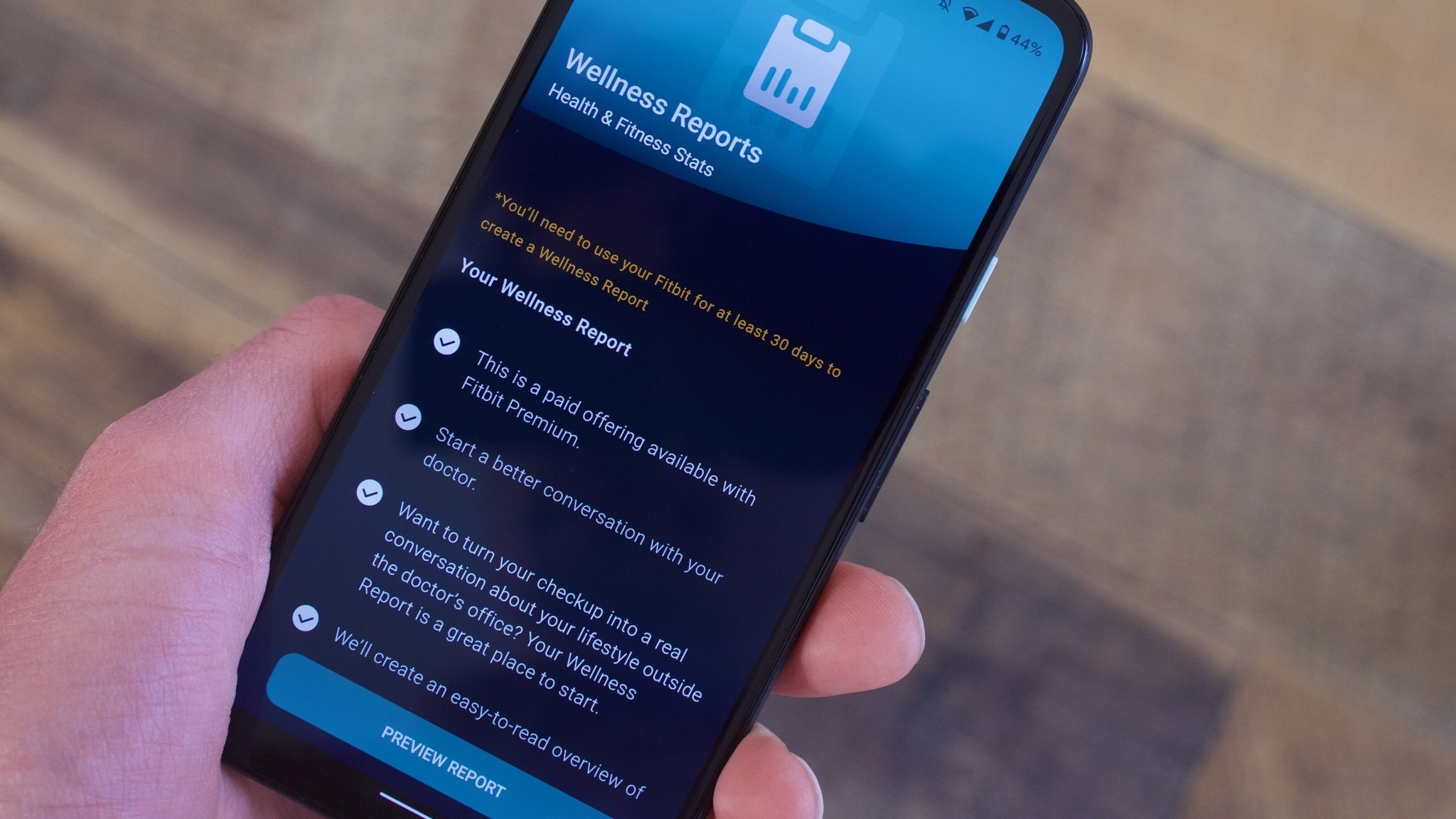
I know plenty of people who went on strict diets to lose weight, counting every calorie and weighing their food for nutrition apps. And with no exceptions, those people fell off their diets and apps because (A) they're so much work to track and (B) they have you fixating on the impact of every single meal until the pressure and cravings escalate and you end up binge-eating.
My approach has nothing to do with eating exactly 2,000 calories (or less to lose weight) and everything to do with moderation. I want to lose this weight and then keep it off, and I know myself. I'm not going to give up on sugar, snacks, or the occasional beer for the rest of my life, so I had to find the balance of indulging myself without going too far.
I kept things simple. I used to buy myself gummy worms (800 calories a bag) and eat them in one sitting, so I switched to buying bags or bars in the 250–400 calorie range. I used to buy bags of goldfish (840 calories) and scarf them down at my desk over a day; I knew that I couldn't just stop myself halfway, so I switched to Ritz peanut butter sandwich packs (200 calories) that naturally cut me off.
I inhale high-calorie snacks like crackers and chips because they don't feel filling, so I switched to dense snacks like bagels or protein bars that proportionally fill my stomach.
I don't trust myself with a full pantry of snacks, but I do trust myself to know how much food is too much without a calculator. You do too.
With alcohol, I usually like to have a couple of drinks to enjoy a buzz without overdoing it, but I'd realized that a "beer gut" was a real thing. So rather than cut back my number of drinks per sitting, I cut back the number of days I drank, saving it for once or twice a week instead of every couple of days.
Takeout food is calorie-rich and salty, causing your body to retain water. But as much as I'd love to cook every day, I'm not going to, especially if I'm spending hours a day walking or running. So, I simply curtailed the number of times I ordered out per month.
I can keep going, but my overall point is that weight loss doesn't need to be calculative, just relative and contextual. I know that I have bad impulse control with foods that come in large containers, so I buy snack-sized options that are more expensive but less dangerous. Then, when I'm home, I freely enjoy the foods I bought for myself without guilt.
So long as I'm eating less than my past self, I know it'll pay off eventually, and I'll still enjoy Five Guys and Ben & Jerry's in the long term.
Keep it simple!
Here's the TL;DR: I lost 30 pounds by walking an extra couple of miles per day, using tech like smart scales and smartwatches to track my activities and weight trends, focusing on common-sense portion control with food and drinks, and logging my progress in a Google Doc where I prioritize monthly goals over daily activity rings. It's uncomplicated, and that's why it worked for me.
These were my monthly changes in pounds since July 2023: -1.6, -9, -4, -4.5, -0.2, +0.6, -5.1, -2.6, -2, +1.2, -0.6, -2.9. After my initial weight free-fall, things have stabilized, and I'll have months where I'm too sedentary or snacky to make significant progress. But I have confidence in myself that things will stay on track and I'll find the time to get walking again, especially in the summer months when the sun's out past 8 p.m.
My weight loss advice is simple: Carve out time in your schedule to walk, with or without company, and write down your progress somewhere to keep yourself honest. Don't trust yourself to deprive yourself of delicious food for the rest of your life; instead, try to find ways to eat less than you did yesterday while still enjoying those guilty pleasures in moderation.




!["[T]he First and Fifth Amendments Require ICE to Provide Information About the Whereabouts of a Detained Person"](https://images.inkl.com/s3/publisher/cover/212/reason-cover.png?w=600)


